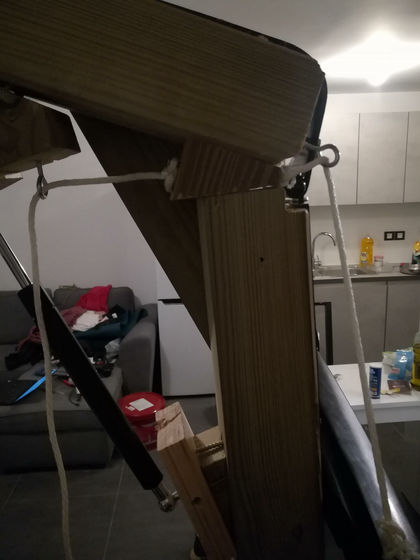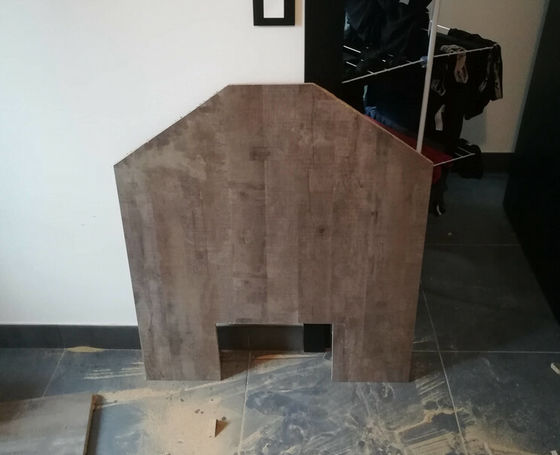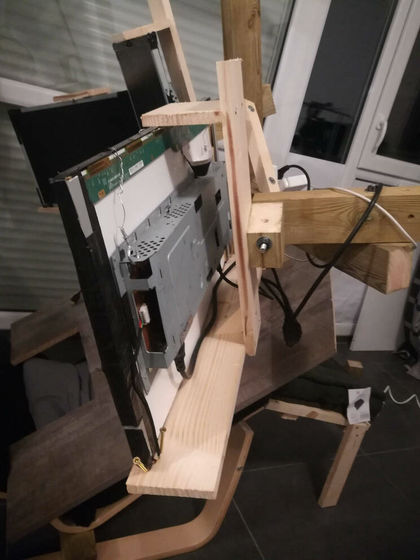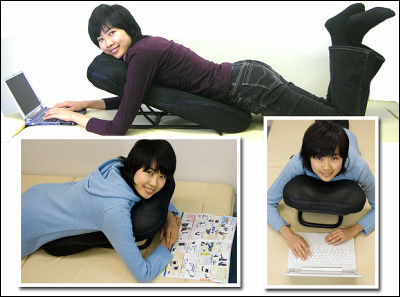A fierce man who has made his own 'laydown desk' that can lie down and work at the desk appears

Sitting on a chair for
I built a lay-down desk --My blog
https://blog.luap.info/drafts/i-built-a-lay-down-desk.html?hnn
Paul said that he made his own original laydown desk, spending most of the day in front of the computer screen. Paul was looking for a desk like Signature Altwork Station where he could lie down and work on his desk, but he gave up buying it because it was very expensive at $ 7,650 (about 800,000 yen).
Therefore, I made the following laydown desk by myself.

Paul mentioned the following seven when making his own laydown desk. I decided to make my own laydown desk after satisfying the following conditions. In addition, there is no reference example of laydown desk, and Paul did not usually do DIY, so instead of making a precise plan first and then making a desk yourself, the stage while actually making a desk We have adopted a method of finishing the product.
・ Three monitors can be installed
・ It is possible to lie down
·Easy to use
・ Light and does not take up too much space
・ Use a bicycle to carry the parts needed to make your own desk
・ Paul doesn't have DIY tools
・ There is no reference example because no one has made a similar desk.
The chair part that is the base of the laydown desk must be made by yourself or purchased off-the-shelf. Paul bought a chair called

The most difficult task was 'I had to buy POÄNG at IKEA on a rainy day and run a distance of 7km.'

Next, I bought an actuator that can withstand a weight of 70 kg from

Paul uses this actuator to design the monitor so that it can be moved up and down. In addition, Mr. Paul designed the actuator so that it can expand and contract by pulling the string, but he states that if this mechanism breaks, it will be replaced with an electric actuator.
Paul bought plywood and used it as a desk for his PC. Paul's body fits in the recessed part at the bottom.

When you attach this plywood to your own reclining chair, it looks like this. The plywood part is designed so that it can be moved up and down with an arm.

The following is a monitor arm to which three monitors can be attached.

Combining all of these will result in the following laydown desk. When you pull the string overhead, the parts that integrate the monitor arm and desk part move up and down, and you can work on the desk while lying down.
As a result of making his own laydown desk, Paul said, 'I can not use the mouse anymore because the mouse slides down. I probably need to change it to a trackball.' 'I need to invest in an ergonomic keyboard.' It is revealed that it is expected to spend more than expected because it puts a burden on the parts other than the waist when it is used for.
According to Paul, the cost of making a laydown desk was tools (45 euros: about 5600 yen), POÄNG + cushions (110 euros: about 14,000 yen), as well as wood and screws. It seems that he succeeded in creating an ideal desk and chair for himself at a much lower price than purchasing an office chair that costs tens of thousands to hundreds of thousands of yen with a desk.
Related Posts:







